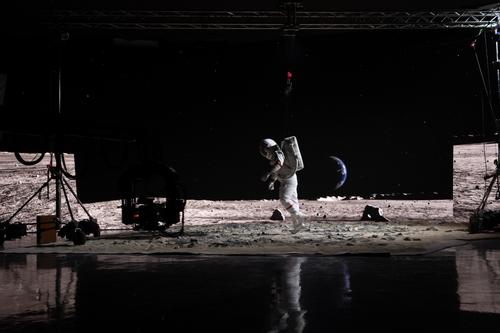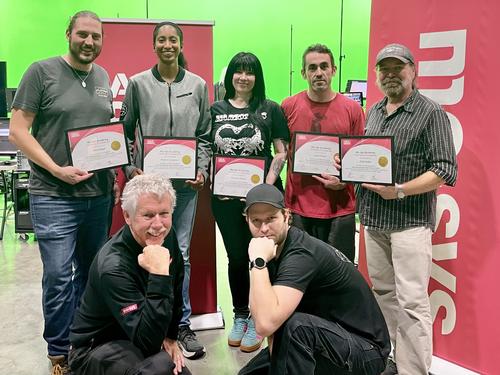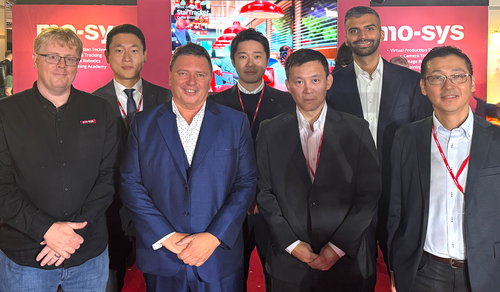What is motion capture and how does it work?
Motion capture (Mo-cap) refers to a group of technologies that records the movements of people and objects, and transfers the corresponding data to another application. It’s been used for many purposes, from sports therapy, farming, and healthcare, to film and gaming. By mapping real-world movement on computer generated frames, motion capture allows for photorealistic dynamics in a virtual environment. Here’s how it developed and how it works.
The birth of mo-cap
The first major step in the development of mocap was brought by American animator, Lee Harrison III, in the 1960s. Using a series of analogue circuits, cathode ray tubes, and adjustable resistors, Harrison devised a system that could record and animate a person’s movement in real-time.
Harrison’s Animac and Scanimate technology was developed in the late 1960s and allowed real-time animations to be created and processed by a computer. With Animac, actors would wear what was described as an ‘electrical harness’ or ‘data suit’ wired up to a computer. Using potentiometers that picked up movements attached to the suit, an actor’s movements could be translated into crude animations on a monitor.
Though the result was fairly basic, it was soon being utilised in various TV shows and advertisements across the States. The abstract images that could be produced with the rudimentary mocap technology of Animac and Scanimate, however, just weren’t good enough to attract mainstream attention.
The development of mo-cap
The following decades saw improvements on Harrison’s designs, with bodysuits more accurately recording movement. They were also helped by the development of large tracking cameras; as useful as they were, however, each was about the size of a fridge.
While mocap had been used sparingly in the 1980s and 1990s with films like American Pop (1981) and Cool World (1992), the first film to be used entirely using the technology was Sinbad: Beyond the Veil of Mists (2000). The film was a flop, but its use of mocap was picked up and expanded on by Peter Jackson in his making of The Lord of the Rings Trilogy in the early 2000s.
For the first time ever, actors wearing their bodysuits (complete with retroreflective ping-pong balls) could perform alongside their non-animated colleagues in the same scene. Among CG-created characters, The Lord of the Rings’ Gollum is recognised as one of the most impressive Hollywood has ever produced. The combination of the character’s voice and intricate facial expressions performed by Andy Serkis resulted in an unforgettable motion-capture performance. The character and technology were created on the fly by Weta Digital’s Bay Raitt.
Facial capture
With an increasing awareness of how motion capture techniques can enhance productions, more attention has been given specifically to facial capture. A number of companies have developed highly accurate systems, which, when paired with powerful graphics engines, result in like-like, photo-realistic facial images. Cubic Motion (now partnered with Unreal Engine) is one of these, and has worked on a number of high-profile games and virtual experiences, including Spiderman, League of Legends, Apex Legends.
Motion capture techniques
Nowadays, there are four main motion capture techniques:
- Optical (passive) – With this technique, retroreflective markers are attached to bodies or objects, and reflect light generated from near the camera lens. Once reflected, the light is used to calculate the position of the markers within a three-dimensional space, and recorded.
- Optical (active) – This technique is exactly the same, but the markers emit light rather than reflect them. The markers therefore require a power source.
- Marker-less – This technique doesn’t require markers of any sort. It relies on depth-sensitive cameras and specialised software in order to track and record moving people and objects. Whilst more convenient in some ways, it’s generally considered less accurate than its optical or mechanical-tracking alternatives.
- Inertial – This technique doesn’t necessarily need cameras to operate. It records movement through IMUs (inertial measurement units), which contain sensors to measure rotational rates. The most common sensors used in IMUs are gyroscopes, magnetometers, and accelerometers.
What is motion tracking used for?
Motion tracking and capture has a broad range of uses across various industries, including:
- Film and Gaming – Motion capture is used to record the movement of actors and transfer them onto virtual or computer-augmented characters.
- Sports Therapy and Healthcare – Health professionals can use motion capture to analyse the movement of patients and diagnose problems i.e gait analysis.
- Military – When combined with virtual reality, motion capture technologies have been used to enhance military training experiences.
If you’re interested in learning more about the future of the film industry, check back regularly for more articles from Mo-Sys Academy. Drawing from years of experience in virtual production for film and tv, and as one of the UK’s leading camera tracking suppliers, we’re aiming to educate the next generation of producers.




